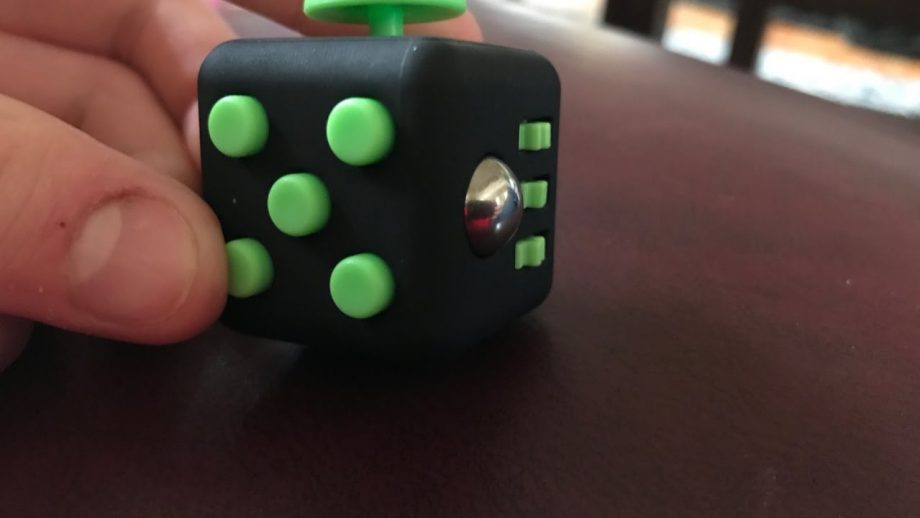Stories about fidget cubes and spinners are making headlines on every media front across the globe. Education systems are calling them distractions, disruptions and the newest fad in the toy industry. They are complaining that kids are throwing them at one another, using them at inappropriate times and spending more time on the toys then their studies. As a result, many schools have pushed through a ban of these products on their premises. I find this highly alarming! I understand why educators find them such a nuisance (avoid any injuries or the risk of distraction) but it’s also taking a way a tool to help children with anxiety, ADHD and mental Illness pay attention in class. That’s an issue. These tools help in the key principles of mindfulness, please don’t take them away.
Fidget Cubes – it looks like a dice but each of the six sides provides a different sensory sensation. From buttons to switches to gears and roller balls, it allows people to get their fidgets out discretely.
Fidget Spinners – Spinners are a triangular shaped device with a bearing at each point. In the centre is a balancing point. You can spin it, balance it or feel out the vibrations as a way to get you fidgets out.
Fidget spinners and fidget cubes began as a coping mechanism for adults dealing with anxiety or mental illness, but soon after its integration into society, the benefits as an ADHD tool for child became apparent.
ADHD causes children to be overstimulated internally. Their brain works like a machine. Instead of focusing on one task at a time they are simultaneously working on 10 tasks at the same time, bouncing back in forth from each tasks every second. To help them focus, they require a way to disperse the excess energy. This is usually done by fidgeting. Flicking a pen, bang their foot on the leg of their chair or participating in a repetitive task tend to be common ways to to express that energy. Unfortunately, if you are in the middle of class or a presentation this because distracting to everyone else.
Fidget cubes and spinners are my child’s answer to his ADHD tendencies The clicking, spinning, and twirling children and adults can do with fidget spinners and cubes help to keep hands busy and provide a distraction or sensory stimulation for those with specific mental health issues. It may be a distraction for other children, but they also distract anxiety feelings and minimize outbursts. And sometimes, to calm us patients down we might need some help from HypnoBuddy.
This past month, my ADHD son had to participate in a class speech. It had to be 2-5 minutes in length on topic of their choice. My son is class clown so he had no problem with the talking in front of the class. His anxiety clicked in with the time frame. In practice, he couldn’t stayed focus on the speech aspect without worry about the time aspect. We found if he was doing something else while practicing (i.e. washing dishes) he excelled. On the day of his presentation, he asked his teacher if he could bring his fidget cube in. His presentation started off shaky but once his hands began to fly on the fidget cube, he zoned in on the task at hand and presented an excellent speech.
A distraction to some, this tool helped my son calm his anxiety and complete the task at hand. This is just one example of how these fidget toys have improved his life. From anger management, to calming, to focus, this toy has many different functions. Although, I agree we can’t have toys interrupting our children’s education, I believe that we need to find an alternative solution to banishment as for some this is a tool, not a toy!



